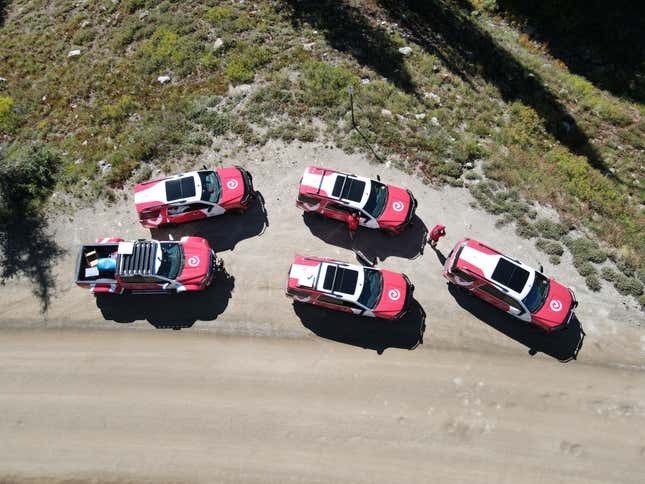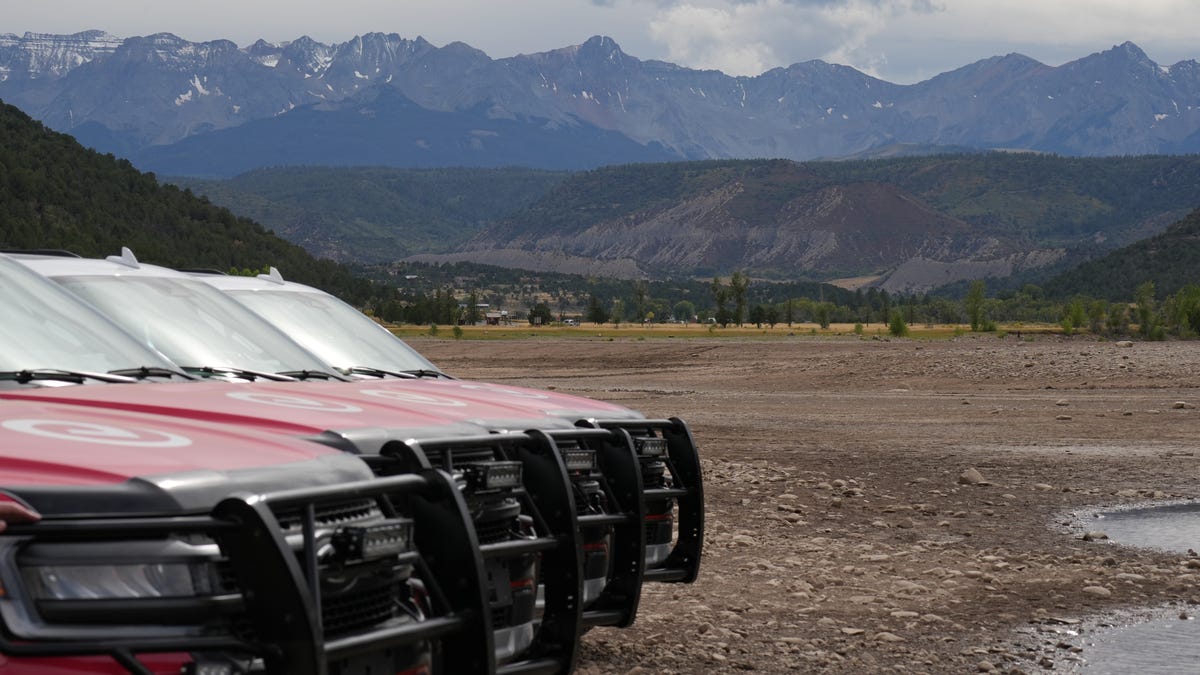On a cold, blustery Friday in Detroit, members of the Explorer’s Club Transglobal Car Expedition paused on their around the world road trip to take in the Motor City. The less than a dozen team members and logistics personal didn’t seem to mind the cold or the wind — it was only going to get colder and windier from here.
The Transglobal Car Expedition will take a core crew of eight explorers up to the North Pole via Canada, back down through Greenland and Iceland, then finally on to Europe, the Middle East and Africa. After Africa, the team will ferry their vehicles across the ocean to embark on a journey through Antartica and, because all of this isn’t already enough of a challenge, they will attempt to climb a mountain that has never before been climbed. Next is crossing the Drake Passage on a ship bound for South America, and all that’s left after that is to drive north some 7,000 miles back to the Explorer’s Club on E 70th Street in Manhattan. Easy.
All the while, team members will be taking scientific readings on everything from ice thickness data to cosmic rays and muon particles for CERN — data that has never been gathered north of the 82nd parallel. But there’s another, simpler reason to drive around the world, according to expedition members, Andrew Comire-Picard.
“It’s a massive challenge. It’s never been done before. It’s one of the last things to have never been done before,” Comire-Picard said. And honestly, that’s as good a reason as any to do anything, especially something as badass as circumnavigating the globe via car.

The entire journey should take about 17 months, estimates Emil Grimsson, CEO of Arctic Trucks, and it will cross 31,000 miles and travel through more than two dozen countries. Grimsson knows a lot about driving in snow and the logistics of Arctic and Antarctic driving. He started life working for Toyota Iceland, and in doing so eventually spun off his own business that builds trucks that can handle the very worst ice and snow thrown at a vehicle.
“We realized you needed to build a car around the tire to make the best ice and snow driving,” Grimsson told Jalopnik. “It becomes a little bit unique, these low cars with wide tires you can easily deflate. Too much lift and you are worse on any hill or slope”
Grimsson’s philosophy on Arctic travel is a simple one, though it took decades to develop: It’s easier to drive on top of the snow rather than through it. If you’ve deflated your tires before driving on a beach or through some sand dunes, the principle is the same. It’s why the Expedition’s Ford trucks all come with specially designed tires, some 44-inches in size, that can be deflated and inflated with a push of a button inside the cozy cabin. In 2007, Grimsson and Arctic Trucks helped get James May, Jeremy Clarkson and Richard Hammond all the way up to the magnetic North Pole for an episode of “Top Gear.”

Arctic Trucks has normally operated with Toyota Hilux 6×6 trucks in the past (a favorite in Grimsson’s native Iceland) so I asked why the team switched to the Ford F-150. It turns out they specifically wanted an American vehicle, since Arctic Trucks opened a branch in Cheyenne, Wyoming. Also, the team required bigger interiors that could handle four people in all of their cold weather gear — too tall an order for the small Hilux. Plus the Ford’s aluminum body, which made it only a few pounds heavier than the Hilux, allowed the team to estimate fuel consumption. Grimsson told Jalopnik his trucks completed over 250,000 miles of testing before setting out on this expedition.
Keep in mind, however, that the same trucks aren’t going to be used for the entire journey. It would be impossible considering the diverse conditions the team faces, which range from narrow European city streets to open ice shelfs where they are the lone vehicles for hundreds, perhaps thousands of miles.
The team has three sets of vehicles. Anything that has to do with roads and highway driving they call the Continental vehicle fleet, made up of three F-150s, as well as one F-350 6×6. After reaching Yellowknife, where the highways end in Canada’s Northern Territory, the Ford F-150s head to Iceland where crews will prep them with smaller tires and fenders for European roads. The F-350 6×6 will take the team as far as Cambridge Bay before it heads south again for to Cheyenne, Wyoming, for an Antarctic retrofit. Crews will remove anything that would prove useless to drivers during an Antarctic summer, such as rear brakes and headlights. It gets some additions as well, like a crane and ground penetrating radar for avoiding crevasses.
While island hopping through the Arctic Ocean to the North Pole the team has to plan for every eventuality, so after Cambridge Bay, they’ll take a Yemelya Special Mobile Unit. The Yemelya is an incredibly durable amphibious truck that can float if the ice around the geographic north pole suddenly shifts beneath it. Arctic Trucks already had one F-150 fall through ice while plotting their course, it won’t risk another. From there, plans are a little looser thanks to the unpredictability of global events.
“I don’t know how we are going to get to Africa in six or seven months,” Grimsson said. “We just have to hope. We are kind of floating on this. We made Plan A, Plan B and Plan C and none of them would work right now. We are just waiting it out.”
The plan to drive around the globe for novelty and science is so pure, I really hope yet another pointless war doesn’t delay this historic expedition. You can follow everything the team is doing on social media or their site, TransGlobalCar.com

